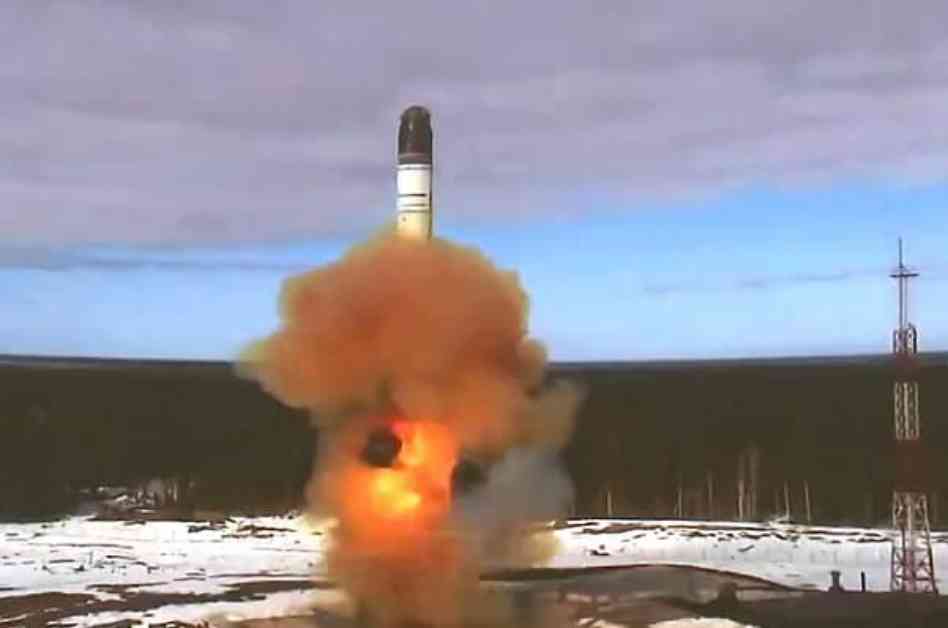Vladimir Putin has recently placed the Satan II intercontinental ballistic missile (ICBM) on “combat duty,” capable of carrying 16 nuclear warheads and reaching a range of 11,000 miles. This decision follows Putin’s approval of a new nuclear doctrine, suggesting that a nuclear strike could be carried out in response to aggression against Russia and its allies by a non-nuclear state, supported by a nuclear state, using massive non-nuclear attacks such as drones.
Putin emphasized that Russia does not seek a preventative strike in its nuclear deterrence policy, as a retaliatory strike would ensure the enemy’s destruction. Russian Strategic Missile Forces Commander, Colonel General Sergey Karakaye, announced the introduction of fifth-generation Yars and Avangard missile systems in the Strategic Missile Forces. Additionally, work is underway to deploy the newest silo-based Sarmat missile system with a liquid-fueled super-heavy missile on combat duty.
In response to recent attacks, including Ukrainian forces firing US-made long-range missiles inside Russia, the Kremlin has warned of “response actions” against Ukraine. The Russian Defence Ministry reported that Ukrainian forces launched Army Tactical Missile System (ATACMS) strikes near Kursk, resulting in damage and casualties. The ministry confirmed that multiple strikes with Western weapons targeted the Kursk region, including an attack on the Kursk-Vostochny airfield.
The Russian Ministry of Defence is closely monitoring the situation and preparing response measures to address the attacks. The escalation of tensions between Russia and Ukraine underscores the importance of strategic readiness and military preparedness in the region. As the situation continues to evolve, both sides must exercise caution and prioritize diplomatic solutions to prevent further conflict and ensure regional stability.












